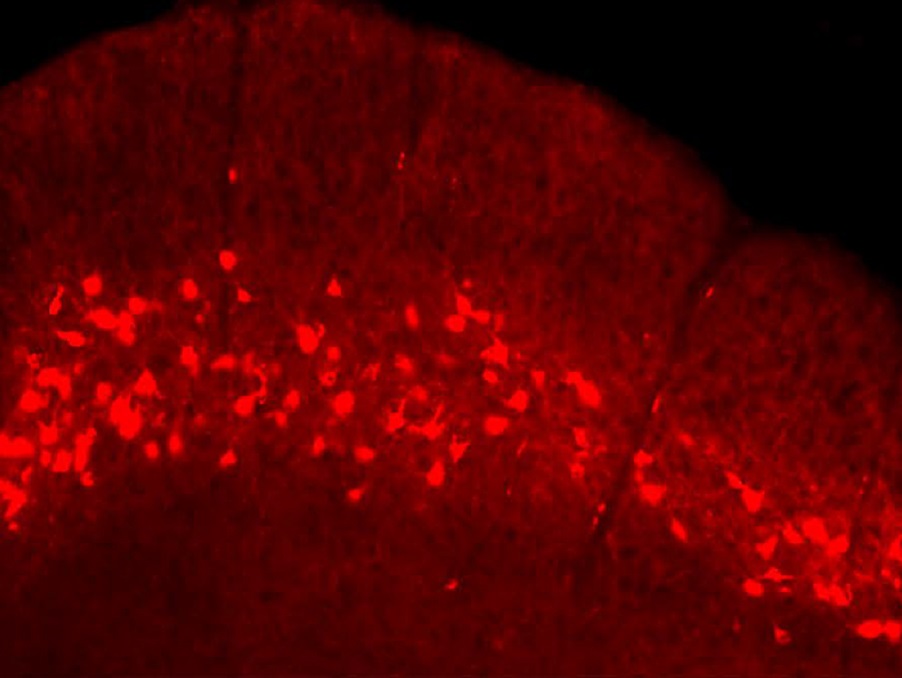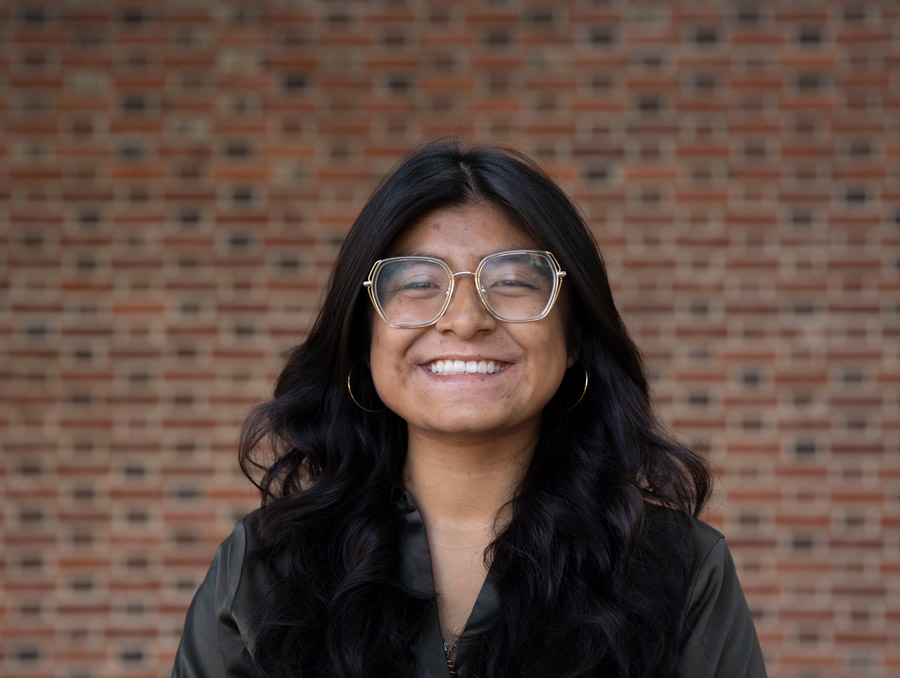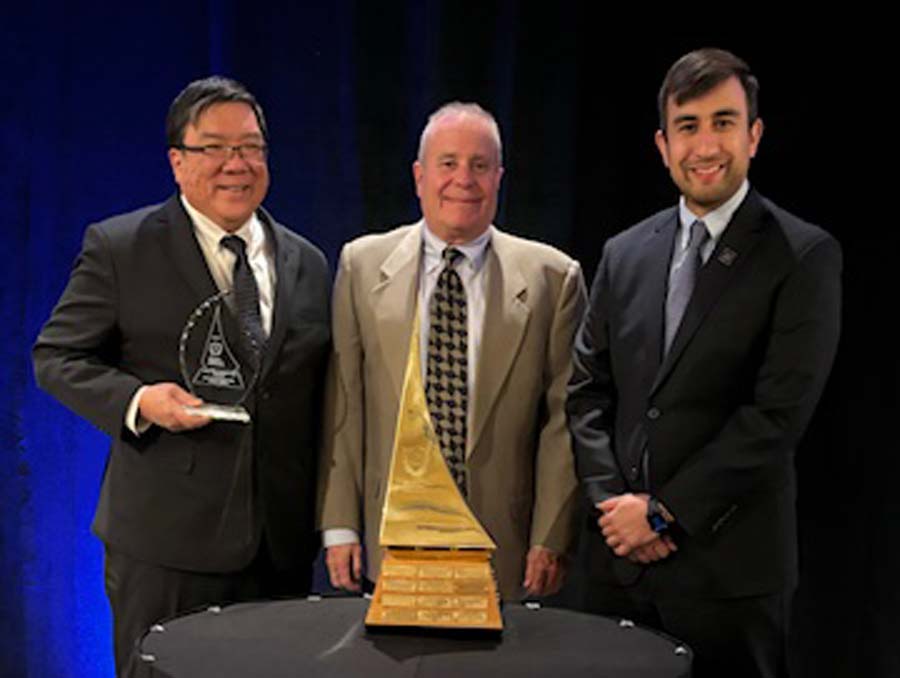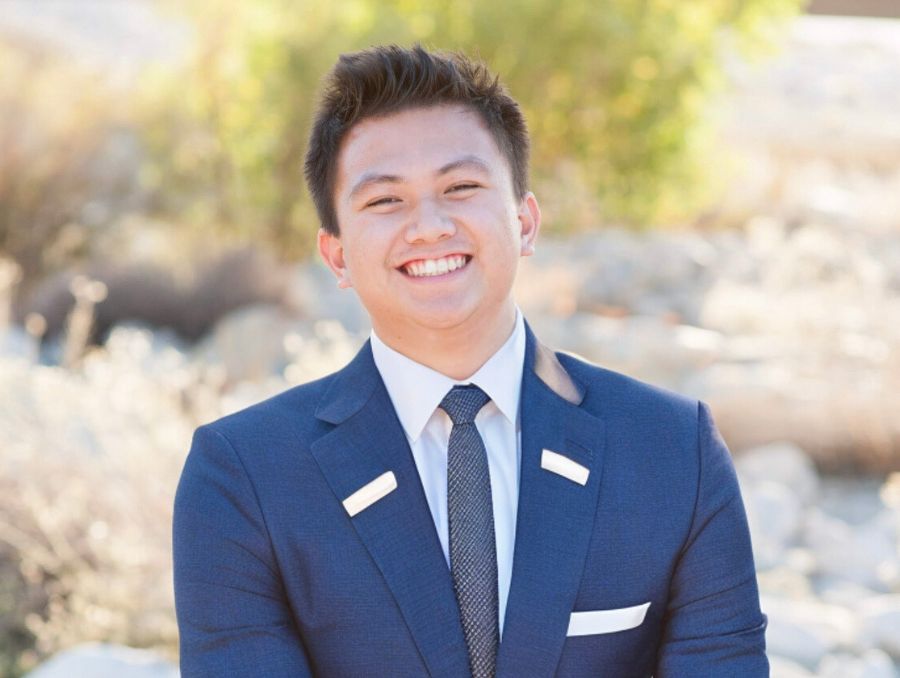Jennifer Hoy, an assistant professor in the Department of Biology, was recently granted a National Institutes of Health (NIH) grant to pursue research on how visual stimuli are perceived. The announcement of the award came at the end of August, and Hoy’s project will be a collaboration with two other faculty members at the University as well as Karl Farrow, a principle investigator at NeuroElectronics Research Flanders (NERF) in Belgium.
The NIH RO1 grant will provide Hoy’s lab and her collaborators with nearly $2 million over the course of five years and will also fund undergraduate and graduate student research. This grant is a prestigious award that grows more competitive each year, making this achievement even more notable.
“I wanted to understand how these subconscious interactions that underlie approach behaviors develop,” Hoy said.
The goal of the research is to identify how neurons in the brain alert us to the appearance of important visual stimuli. Essentially, the researchers want to know how the brain determines, “Where in space is this thing and how do I feel about it?” Hoy’s lab studies how the mouse brain physically links certain visual stimuli to a response. Much of the time this is done quickly and without much conscious thought. If a mouse detects a tasty-looking bug, what makes the mouse hunt it?
“I wanted to understand how these subconscious interactions that underlie approach behaviors develop,” Hoy said. If Hoy’s lab can unearth the visual pathways required for critical visual orienting behavior, which are simpler and easier to study in mice, more targeted therapies can be developed for human disorders such as autism where visuospatial orienting behaviors are disrupted.
“From the get-go, you’re wired to already have an innate visual understanding of what general things are good and what general things are bad,” Hoy said. Researchers will trace the response of neurons from the superior colliculus to other parts of the brain to determine how a visual stimulus is either perceived by the mice as good and worth approaching, or bad, requiring fleeing.
The superior colliculus is a part of the brain connected to the retina and brainstem that helps an organism orient itself in its environment by generating a two-dimensional map of its visual world. It also helps an organism identify what stimuli are interesting and what deserves attention. For a mouse, that might be an insect that would make a good snack which the mouse identifies as something it wants to approach.
One state-of-the-art method the researchers are using is recording neural population activity via functional ultrasound imaging. This technique was developed in part by Farrow.
Farrow’s lab is one of the few labs in the world routinely employing this approach that allows brain-wide mapping of neural circuit connectivity in the superior colliculus. The resulting data are akin to activity maps generated by functional magnetic resonance imaging (fMRI) of the human brain, but at a much finer resolution in the mouse brain.
“In addition to the neuronal circuit level activity maps, very temporally precise neural activity can be measured from a specific brain region using next generation NeuroPixel probes while mice are actively viewing and behaving in response to controlled visual stimuli,” Hoy said. “The resulting data will yield the neural activity patterns of specific neuron types as they respond during visual stimulus processing and behavior.”
While several methods exist that allow researchers to associate brain activity with different aspects of behavior, it is especially challenging to parse out whether that activity is due to the stimulus being detected, the action the organism is taking in response to the stimulus or the decision being made about the stimulus. To address this problem, Dr. Hoy teamed up with two additional collaborators on this project, Assistant Professors Mark Lescroart and Edward Ester from the Department of Psychology who will apply their methods for decoding complex neural activity patterns in human brains to neural population activity in mouse brains. Another important goal of this collaboration is to ensure that researchers are considering how visual processing that happens in the brains of mice and humans may differ between the very distantly related species.
The next step for this research is to determine where meaning of and attitude toward a visual stimulus comes from and how it develops and is shaped by experience. Experiences with a given stimulus and the consequences of that interaction reinforce or change how a general stimulus is perceived, in either a positive or negative way.
“By understanding how experiences physically alter our innate wiring for processing positive and negative stimuli, we will be better poised to address disorders where the link between sensation and emotional response is perturbed, such as posttraumatic stress disorder, generalized anxiety and depression,” Hoy said.
The current grant will largely support personnel and trainee costs as well as the costs associated with the care and study of natural behavior in mice. The biggest expense, Hoy says, is training and paying people to do the work and learn the techniques. Attracting an experienced researcher was a big objective for Hoy and being able to pay well for a researcher who could lead a collaborative group, train students and perform the statistical analyses necessary for this work was crucial.
“Dr. Hoy got off to a great start mentoring students as co-PI on a National Science Foundation (NSF) Research Experience for Undergraduates site award that she used to engage undergraduates in extramurally funded research,” Jack Hayes, chair of the Department of Biology said. “Dr. Hoy’s NIH RO1 award will build on that success to support research opportunities for both graduate students and undergraduates.”
Hoy has also collaborated with faculty from the Department of Mechanical Engineering. Associate Professor Yantao Shen brought Hoy onto a project funded by the NSF, where Hoy’s expertise in animal behavior and sensation were relevant to the soft robotics training program given that animals make efficient and rapid sensory-based decisions.
Hoy credits a lot of her lab’s success to support from the Center of Biomedical Research Excellence (COBRE) funded by the National Institute of General Medical Sciences. This NIH COBRE award, which is directed by Department of Psychology Foundation Professor Michael Webster, provides critical financial resources as well as intellectual support and mentoring, guidance on grant-writing and access to core facilities.
“The COBRE was instrumental in getting us preliminary data in our lab to measure animals’ responses to these visual stimuli,” Hoy said. “Michael Webster really works with each individual awardee. He’s so experienced and successful himself in the grant writing process,” she added.
“Our integrative neuroscience program has been developing in leaps and bounds and that’s down to the quality of our students and the passion of the Institute’s directors,” Hoy said. “One thing I really like about the University is that we can get really good undergraduate students into the lab and trained, and they deliver, and in return they get to participate in research.” Hoy has been at the University since 2017.













